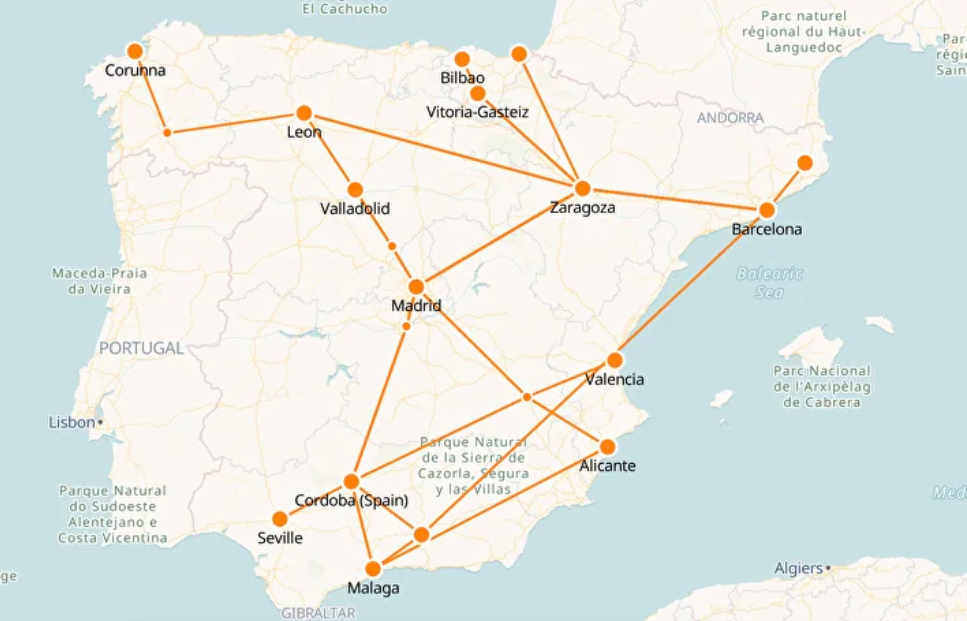“I pray you, in
your letters,/ When you shall these unlucky deeds relate,/ Speak of me as I am;
nothing extenuate,/ Nor set down aught in malice: then must you speak/ Of one
that loved not wisely but too well” (Othello, 5.2).
These are dying words of Shakespeare’s Othello, his final
utterances.
It is not until the end of a tragedy that the hero discovers
the error of his ways. By which time it is often too late to save himself. The
hero is chasing something and ‘in the pursuit of it, he destroys himself and
wreaks general havoc’. Othello in his dying soliloquy recognizes that it is his
pursuit of love that has led to his undoing.
But what significance do Othello’s dying words have in the
context of our trip through Andalusia?
Well, Othello, from Shakespeare's play, "Othello,
the Moor of Venice", is arguably the most famous Moor in history
(literary history, anyway). And the
history of Andalusia is in many ways, defined by it’s Moorish past.
The term "Moors" generally refers to the Muslim
inhabitants of al-Andalus, the region of the Iberian Peninsula (modern Spain
and Portugal) under Muslim rule from 711 to 1492. The Moorish occupation of
Spain began in 711 AD when an African army, under their leader Tariq ibn-Ziyad,
crossed the Strait of Gibraltar from northern Africa and invaded the Iberian
peninsula ‘Andalus’ (Spain, as it was known then, under the Visigoths). Historically, Moors were primarily Berber and
Arab peoples from North Africa who invaded and conquered the region, leaving a
lasting impact on its culture, architecture, science, and language.
The term "Moor" is derived from the Latin
"Maurus," referring to the people of Mauretania, a Roman province in
North Africa. The Moors' conquest of the
Iberian Peninsula in 711 AD marked the beginning of Al-Andalus. They
established a sophisticated civilization known for advancements in various
fields, including:
- Architecture: The Alhambra in Granada is a prime
example of Moorish architecture.
- Science and Mathematics: They introduced
advancements in algebra, astronomy, and medicine.
- Agriculture: They introduced new crops like
oranges, lemons, and rice.
- Language: Many Arabic words are still
incorporated into the Spanish language.
The Moors, who ruled Spain for 800 years, introduced new
scientific techniques to Europe, such as an astrolabe, a device for measuring
the position of the stars and planets. Scientific progress in Astronomy,
Chemistry, Physics, Mathematics, Geography and Philosophy flourished in Moorish
Spain. Historians have recognized and declared
that there were no lands at that time (the eighth century) “more admired by its
neighbours, or more comfortable to live in, than the rich African civilization
which took shape in Spain”.
At its height, Córdova, the heart of Moorish territory in
Spain, was the most modern city in Europe. The streets were well-paved, with
raised sidewalks for pedestrians. During the night, ten miles of streets were
well illuminated by lamps. (This was hundreds of years before there was a paved
street in Paris or a street lamp in London.) Additionally, Cordova had over 900
public baths!
The Great Mosque of Córdoba (La Mezquita) is still one of
the architectural wonders of the world in spite of later Spanish
disfigurements. Its low scarlet and gold roof, supported by 1,000 columns of
marble, jasper and porphyry, was lit by thousands of brass and silver lamps
which burned perfumed oil.
Here are some other notable facts about the Moorish rule in
Andalusia:
- Education was universal in Moorish Spain,
available to all, while in Christian Europe ninety-nine percent of the
population were illiterate, and even kings could neither read nor write. At
that time, Europe had only two universities, the Moors had seventeen great
universities - located in Almeria, Cordova, Granada, Juen, Malaga, Seville, and
Toledo.
- In the tenth and eleventh centuries, public
libraries in Europe were non-existent, while Moorish Spain could boast of more
than seventy, of which the one in Cordova housed six hundred thousand
manuscripts.
- Over 4,000 Arabic words and Arabic-derived
phrases have been absorbed into the Spanish language. Words beginning with
“al,” for example, are derived from Arabic. Arabic words such as algebra,
alcohol, chemistry, nadir, alkaline, and cipher entered the language. Even
words such as checkmate, influenza, typhoon, orange, and cable can be traced
back to Arabic origins.
- The most significant Moorish musician was known
as Ziryab (the Blackbird) who arrived in Spain in 822. The Moors introduced
earliest versions of several instruments, including the Lute or el oud, the
guitar or kithara and the Lyre. Ziryab changed the style of eating by breaking
meals into separate courses beginning with soup and ending with desserts.
- The Moors introduced paper to Europe and Arabic
numerals, which replaced the clumsy Roman system.
- The Moors introduced many new crops including
the orange, lemon, peach, apricot, fig, sugar cane, dates, ginger and
pomegranate as well as saffron, sugar cane, cotton, silk and rice which remain
some of Spain’s main products today.
- The Moorish rulers lived in sumptuous palaces,
while the monarchs of Germany, France, and England dwelt in big barns, with no
windows and no chimneys, and with only a hole in the roof for the exit of
smoke. One such Moorish palace ‘Alhambra’ (literally “the red one”) in Granada
is one of Spain’s architectural masterpieces. Alhambra was the seat of Muslim
rulers from the 13th century to the end of the 15th century and is today, a
UNESCO World Heritage Site
- It was through Africa that the new knowledge of
China, India, and Arabia reached Europe. The Moors brought the Compass from
China into Europe.
King Ferdinand and Queen Isabella, known as the Catholic
Monarchs of Spain, played a pivotal role in the Reconquista, the centuries-long
Christian effort to reclaim the Iberian Peninsula from Muslim rule. They
completed the Reconquista in 1492 with the fall of Granada, the last Muslim
stronghold. The completion of the
Reconquista and the subsequent focus on religious unity also paved the way for
Spanish exploration and colonization in the Americas.
However, the Moors' influence on Spain and Portugal is still
evident today in their architecture, language, cuisine, and art. We are so fortunate to be able to still bear
witness to the Moorish legacy as we travel through modern-day Andalusia!









